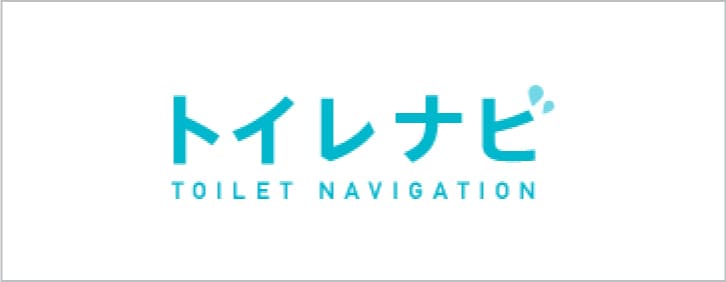Benefits of Chatbots in Healthcare: 9 Use Cases of Healthcare Chatbots
How do chatbots in healthcare benefit the public sector?
The overall risk of bias was high in most included studies mainly due to issues in the measurement of the outcomes, selection of the reported result, and confounding. Future studies should follow recommended guidelines or tools (eg, RoB 2 and ROBINS-I) when conducting and reporting their studies in order to avoid such biases. Accordingly, the high risk of bias and low quality of evidence may reduce the validity of the findings and their generalizability.
In addition, this paper will explore the limitations and areas of concern, highlighting ethical, moral, security, technical, and regulatory standards and evaluation issues to explain the hesitancy in implementation. AI-enabled chatbots, programs designed to simulate conversations with human users, are becoming increasingly common in the behavioral health marketplace to solve for the insufficient supply of mental health clinicians. The non-human nature of chatbots provides a sense of security to patients regarding sensitive subjects.
What’s the most common flaw causing a chatbot to fail?
Patients suffering from mental health issues can seek a haven in healthcare chatbots like Woebot that converse in a cognitive behavioral therapy-trained manner. The healthcare industry incorporates chatbots in its ecosystem to streamline communication between patients and healthcare professionals, prevent unnecessary expenses and offer a smooth, around-the-clock helping station. While chatbots still have some limitations currently, their trajectory is clear towards transforming both patient experiences and clinician workflows in healthcare. Organizations that strategically adopt conversational AI will gain an advantage in costs, quality of care and patient satisfaction over competitors still relying solely on manual processes.
For example, the development of the Einstein app as a web-based physics teacher enables interactive learning and evaluations but is still far from being perfect [114]. Given chatbots’ diverse applications in numerous aspects of health care, further research and interdisciplinary collaboration to advance this technology could revolutionize the practice of medicine. Chatbots have the potential to address many of the current concerns regarding cancer care mentioned above. This includes the triple aim of health care that encompasses improving the experience of care, improving the health of populations, and reducing per capita costs [21]. Chatbots can improve the quality or experience of care by providing efficient, equitable, and personalized medical services.
Bridging the Gap: Behavioral Health Coaches Serve Unmet Need, But May Need Standardization
Let’s check how an AI-driven chatbot in the healthcare industry works by exploring its architecture in more detail. And due to a fact that the bot is basically a robot, all these actions take little time and the appointment can be scheduled within minutes. In this way, a patient can conveniently schedule an appointment at any time and from anywhere (most importantly, from the comfort of their own home) while a doctor will simply receive a notification and an entry in their calendar. Of the 12 studies, 3 studies assessed the influence of using chatbots on the severity of anxiety [28,29,32]. The severity of anxiety was measured using the Generalized Anxiety Disorder scale [28,29] and Overall Anxiety Severity and Impairment Scale [32].
- This system not only improves the patient experience but also optimizes the schedules of healthcare professionals.
- Any chatbot you develop that aims to give medical advice should deeply consider the regulations that govern it.
- You’re back 👋” message to welcome returning site visitors, which offers them a different experience than someone on our site for the first time.
- This bodes well for patients with long-term illnesses like diabetes or heart disease symptoms.
- Technologies, but the company argued that they rivaled many of the industry’s leading systems.
- Heavy users of Wysa’s app had significantly higher average improvement in self-reported depression scores when compared to less frequent users, according to a study published by JMIR mHealth and uHealth.
But not all bots can detect if a person is in crisis, according to a study published in JMIR mHealth and uHealth. “The single biggest existential risk is just doing nothing right now because the vast majority of patients are unable to access care,” Gescheider said. Heavy users of Wysa’s app had significantly higher average improvement in self-reported depression scores when compared to less frequent users, according to a study published by JMIR mHealth and uHealth. During COVID-19, the Ministry of Health in Oman wanted to give the citizens easy access to valuable information. In need of a quick and agile solution, we used Actionbot to automate information exchange between healthcare institutions and citizens during the pandemic. One of the key reasons chatbots are becoming popular is that chatbots are easy to implement.
All participants gave informed consent to complete the survey, and the study received full ethics clearance from Advarra Institutional Review Board Services, an independent ethics committee. The most famous chatbots currently in use are Siri, Alexa, Google Assistant, Cordana and XiaoIce. Two of the most popular chatbots used in health care are the mental health assistant Woebot and Omaolo, which is used in Finland.
Physicians were also given a list of currently available health care chatbots, to examine their familiarity with some of the interfaces that could be potentially accessed by patients. The findings indicated that most of the currently available chatbots were not generally used or heard of by physicians. Although chatbot technology for health care is continually advancing, little is known about the perspectives of practicing medical physicians on the use of chatbots in health care. It would thus seem beneficial to have medical expert opinions on the use of this technology that is intended to supplement or even replace specific roles of HCPs. The purpose of this study was to examine the perspectives of practicing medical physicians on the use of health care chatbots for patients. As physicians are the primary point of care for patients, their approval is an important gate to the dissemination of chatbots into medical practice.
According to the report by Zipdo, the global healthcare chatbot market is expected to reach approximately $498.5 million by 2026. In addition, 64% of patients agree to use a chatbot for information on their insurance and 60% of medical professionals would like to use chatbots to save their working time. As we navigate the evolving landscape of healthcare, the integration of AI-driven chatbots marks a significant leap forward.
Knowledge domain classification is based on accessible knowledge or the data used to train the chatbot. Under this category are the open domain for general topics and the closed domain focusing on more specific information. Service-provided classification is dependent on sentimental proximity to benefits of chatbots in healthcare the user and the amount of intimate interaction dependent on the task performed. This can be further divided into interpersonal for providing services to transmit information, intrapersonal for companionship or personal support to humans, and interagent to communicate with other chatbots [14].
They assist users in identifying symptoms and guide individuals to seek professional medical advice if needed. A chatbot can be defined as specialized software that is integrated with other systems and hence, it operates in a digital environment. This means, chatbots and the data that they process might be exposed to threat agents and might be a target for cyberattacks.
The chatbot enables healthcare providers to receive the amount due for the treatment they offer to their patients. The automation capabilities of a chatbot help healthcare providers create invoices and receive compensation for the service. Some healthcare chatbots are even designed to send reminders and let people know when they have an appointment coming up.
Exploring the Trends and Technology of HealthTech Solutions
Today there is a lack of a higher quality evidence for any type of diagnosis, treatment, or
therapy in mental health research using chatbots. With the right approach, research, and
process to clinical implementation, however, the field has the opportunity to harness this
technology revolution and stands to gain arguably the most from chatbots than any other
field of medicine. Healthcare chatbots streamline the appointment scheduling process, providing patients with a convenient way to book, reschedule, or cancel appointments. This not only optimizes time for healthcare providers but also elevates the overall patient experience. As we delve into the realm of conversational AI in healthcare, it becomes evident that these medical chatbot play a pivotal role in enhancing the overall patient experience. Beyond the conventional methods of interaction, the incorporation of chatbots in healthcare holds the promise of revolutionizing how patients access information, receive medical advice, and engage with healthcare professionals.
As a result, these chatbots help retain potential buyers and generate more pipeline from the middle of your funnel. By using chatbots to automate the customer journey and bring customers deeper down your funnel, you can cultivate relationships hands-free — only interacting human-to-human when the customer is ready. Conversation Qualified Leads (CQLs) are leads that are qualified based on the conversations they’ve had with your chatbot. Because CQLs use information provided directly by your leads, it takes the guesswork out of the qualification process, making them more reliable than marketing qualified leads. For top-of-the-funnel content, like webinar landing pages, chatbots can guide leads through the registration process in a single conversation — no forms required. And on high-intent pages, like pricing and request a demo pages, chatbots can answer any lingering questions so that leads will be ready to start the sales conversation.
Bella, one of the most advanced text-based chatbots on the market advertised as a coach for adults, gets stuck when responses are not prompted [51]. Given all the uncertainties, chatbots hold potential for those looking to quit smoking, as they prove to be more acceptable for users when dealing with stigmatized health issues compared with general practitioners [7]. Chatbots are now able to provide patients with treatment and medication information after diagnosis without having to directly contact a physician. Such a system was proposed by Mathew et al [30] that identifies the symptoms, predicts the disease using a symptom–disease data set, and recommends a suitable treatment.
In this comprehensive guide, we will explore the step-by-step process of developing and implementing medical chatbot, shedding light on their crucial role in improving patient engagement and healthcare accessibility. Patients who require medical assistance on a regular basis can benefit from chatbots as well. For example, providers can use bots to create a link between their doctors and patients.
Healthcare chatbots enable you to turn all these ideas into a reality by acting as AI-enabled digital assistants. It revolutionizes the quality of patient experience by attending to your patient’s needs instantly. I am Paul Christiano, a fervent explorer at the intersection of artificial intelligence, machine learning, and their broader implications for society. Renowned as a leading figure in AI safety research, my passion lies in ensuring that the exponential powers of AI are harnessed for the greater good. Throughout my career, I’ve grappled with the challenges of aligning machine learning systems with human ethics and values. My work is driven by a belief that as AI becomes an even more integral part of our world, it’s imperative to build systems that are transparent, trustworthy, and beneficial.
Hybrid Addiction Treatment Provider Eleanor Health Raises Over $22M
Read on to gain valuable insights you can apply to your healthcare chatbot initiatives. With chatbots, businesses can save time, grow revenue, and increase customer satisfaction — all at once. Limbic Access is the company’s web chatbot that lives on care providers’ websites or can be embedded in a native app. The bot handles intake, triage and performs an initial mental health screen in a “highly engaging way,” according to Limbic’s founder and CEO, Ross Harper. Chatbots remember individual patient details, which allows them to skip the need to re-enter their health data each time they want an update.
We built the chatbot as a progressive web app, rendering on desktop and mobile, that interacts with users, helping them identify their mental state, and recommending appropriate content. That chatbot helps customers maintain emotional health and improve their decision-making and goal-setting. Users add their emotions daily through chatbot interactions, answer a set of questions, and vote up or down on suggested articles, quotes, and other content.
The issue of mental health today is as critical as ever, and the impact of COVID-19 is among the main reasons for the growing number of disorders and anxiety. According to Forbes, the number of people with anxiety disorders grew from 298 million to 374 million, which is really a significant increase. And since not everyone can receive sufficient help for their mental health, chatbots have become a truly invaluable asset. This bot is similar to a conversational one but is much simpler as its main goal is to provide answers to frequently asked questions. The questions can be pre-built in the dialogue window, so the user only has to choose the needed one.
It can give better insights into how things can be marketed differently to improve your business growth. According to a Statista report, 44% of survey respondents are willing to switch to brands offer personalized messaging. We provide companies with senior tech talent and product development expertise to build world-class software. Also, they will help you define the flow of every use case, including input artifacts and required third-party software integrations. Such a streamlined prescription refill process is great for cases when a clinician’s intervention isn’t required.
Understanding the Role of Chatbots in Virtual Care Delivery – mHealthIntelligence.com
Understanding the Role of Chatbots in Virtual Care Delivery.
Posted: Fri, 03 Nov 2023 07:00:00 GMT [source]
Moreover, backup systems must be designed for failsafe operations, involving practices that make it more costly, and which may introduce unexpected problems. Yes, there are mental health chatbots like Youper and Woebot, which use AI and psychological techniques to provide emotional support and therapeutic exercises, helping users manage mental health challenges. You can foun additiona information about ai customer service and artificial intelligence and NLP. They collect preliminary information, schedule virtual appointments, and facilitate doctor-patient communication. An example is a telehealth platform where a chatbot pre-screens patients, collects their symptoms and history, and schedules a video consultation with the relevant specialist, making telemedicine more streamlined and accessible. Medication adherence is a crucial challenge in healthcare, and chatbots offer a practical solution. By sending timely reminders and tracking medication schedules, they ensure that patients follow their prescribed treatments effectively.
Global Market for Healthcare Chatbot to total US$ 12.2 billion by 2034, expanding at a whopping 23.9% CAGR- FMI … – GlobeNewswire
Global Market for Healthcare Chatbot to total US$ 12.2 billion by 2034, expanding at a whopping 23.9% CAGR- FMI ….
Posted: Wed, 20 Dec 2023 08:00:00 GMT [source]
Regardless, early evidence shows that with the proper approach and research, the
mental health field could use conversational agents in psychiatric treatment. Ensuring the privacy and security of patient data with healthcare chatbots involves strict adherence to regulations like HIPAA. Employ robust encryption and secure authentication mechanisms to safeguard data transmission. Regularly update and patch security vulnerabilities, and integrate access controls to manage data access. Comply with healthcare interoperability standards like HL7 and FHIR for seamless communication with Electronic Medical Records (EMRs). Proactive monitoring and rapid issue resolution protocols further fortify the security posture.
This system not only improves the patient experience but also optimizes the schedules of healthcare professionals. Integrating chatbots into mobile apps for healthcare platforms has made appointment scheduling more accessible and efficient. The emergence of chatbots in the healthcare industry has opened new avenues for patient care and management. These AI-driven tools are redefining interactions between healthcare providers and patients. As chatbots in healthcare evolve, they become crucial in streamlining patient-provider communication. Their ability to provide accurate information and support around the clock marks a significant leap in healthcare services.
The rapid adoption of AI chatbots in healthcare leads to the rapid development of medical-oriented large language models. How do we deal with all these issues when developing a clinical chatbot for healthcare? The CodeIT team has solutions to tackle the major text bot drawbacks, perfect for businesses like yours. We adhere to HIPAA and GDPR compliance standards to ensure data security and privacy. Our developers can create any conversational agent you need because that’s what custom healthcare chatbot development is all about.
However, the use of therapy chatbots among vulnerable patients with mental health problems bring many sensitive ethical issues to the fore. Task-oriented chatbots follow these models of thought in a precise manner; their functions are easily derived from prior expert processes performed by humans. However, more conversational bots, for example, those that strive to help with mental illnesses and conditions, cannot be constructed—at least not easily—using these thought models. This requires the same kind of plasticity from conversations as that between human beings. The division of task-oriented and social chatbots requires additional elements to show the relation among users, experts (professionals) and chatbots.
Thanks to their ability to understand natural language, healthcare chatbots can assist with filing claims, checking existing coverage, and tracking the status of each claim. This gives patients easy access to important information and helps them avoid repetitive queries to the healthcare staff. Chatbots can be connected with electronic health records, systems that manage medical practices, and other healthcare-related platforms. This allows them to access and utilize patient data to provide personalized care and recommendations.
Mathematical or statistical probability in medical diagnosis has become one of the principal targets, with the consequence that AI is expected to improve diagnostics in the long run. Hacking (1975) has reminded us of the dual nature between statistical probability and epistemic probability. Statistical probability is concerned with ‘stochastic laws of chance processes’, while epistemic probability gauges ‘reasonable degrees of belief in propositions quite devoid of statistical background’ (p. 12).








